Note: This website was automatically translated, so some terms or nuances may not be completely accurate.
A Compass for Management Guiding Toward a Future Vision: The Mitsukan Museum

Mitsukan is renowned for its "Aji-Pon" vinegar and is a venerable vinegar maker boasting 219 years of history. It is not only the market leader in Japan but also a leading company conveying Japanese food culture globally, with sales channels in North America and Europe. Its headquarters are located in Handa City, Aichi Prefecture, the birthplace of the company, and its museum, the "Mitsukan Museum (MIM)," is also situated there. MIM serves as a compass for both management and employees. We asked about the purpose behind establishing this museum, which cherishes the identity of Handa, the founding location, while integrating with and coexisting alongside the local community, as well as its future plans.
Interview and Text: Osamu Iguchi (PR Consulting Dentsu Inc.)
A facility embodying the spirit of a long-established company dating back to the Edo period
Mitsukan, with over 200 years since its founding, was established in 1804 (Bunka 1) in Handa City, Aichi Prefecture, by Nakano Matazaemon as a vinegar shop. While sake brewing flourished in Handa, the vinegar produced using the leftover sake lees after brewing proved cheaper than rice-based vinegar, offering umami and sweetness that paired well with sushi. This led to its expansion beyond the local area to Edo, becoming a catalyst for the spread of sushi among the common people during the Edo period.
In fact, the Mitsukan corporate museum was first established in 1986 (Showa 61) as the "Vinegar Village," serving as a museum showcasing the company's history dating back to the Edo period. After its opening, the then Crown Prince and Princess visited, and it was subsequently opened to the public. Then, in 2015, it was renovated and reopened as the current "Mizkan Museum" (nicknamed MIM), with its area tripled and packed full of interactive elements.
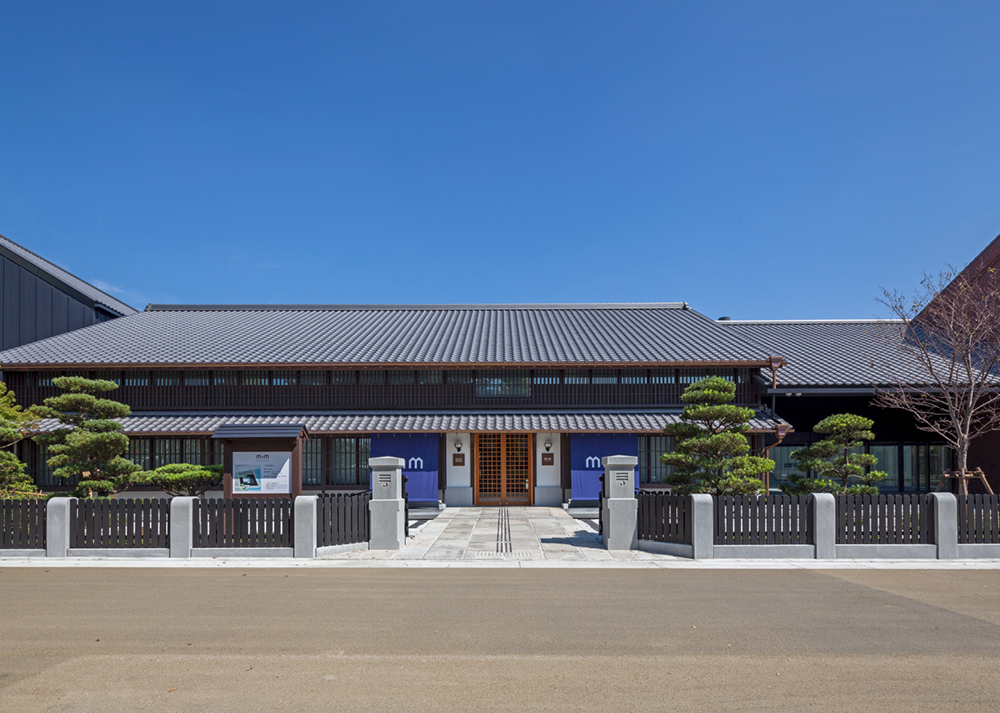
The museum's concept is "Tradition, Innovation, Environment."
The concept of MIM is "Tradition, Innovation, Environment." While looking back on the company's history, it presents the seeds of innovation that it aims to achieve after more than 200 years of activity, and at the same time, it ensures that environmental considerations are not forgotten in all of its activities.
It also has three defined roles: "creating Mitsukan fans, becoming a tourist resource for the area, and serving as a place for children's education." Against the backdrop of a history of transformation and challenge passed down since its founding, the company aims to contribute to society through food products using vinegar and brewing technologies, contribute to regional revitalization through tourism and the economy as a community-based company, and convey the appeal of Japanese food culture to the next generation of children.
The eighth-generation owner's determination and attention to detail in establishing the museum
"Actually, considerable determination was required for the renovation," says Yoshihisa Niimi, director of the museum. The initial impetus came from the need for seismic reinforcement to ensure employee safety, as the Edo-period buildings stood as they were at the time. However, there was hesitation about demolishing buildings that had been standing since the Edo period and were valuable as cultural assets. The seventh-generation owner was particularly committed to maintaining the status quo. Yet, recognizing that the buildings had endured 200 years and would continue to stand, the eighth-generation head made the decisive judgment that employee safety was paramount for the company. While the structure transitioned from wood to reinforced concrete, the exterior remains identical to the original storehouse, preserving the area's landscape entirely. This decision also faithfully honored the previous generation's vision.
"The eighth head's attention to detail was extraordinary; we debated every wall and floor, down to the smallest corner. In some areas, we even reused materials like the exterior wall from the former Nakano Bank in Handa City, Aichi Prefecture, valuing the historical feel and reusing materials from that era wherever possible. We avoid posting any promotional posters to preserve the interior atmosphere and pay careful attention to maintenance, both inside and out. Even tasks like weeding the courtyard are handled by all the staff. The cleanliness inside receives high praise in user surveys, and our cleaning staff truly love the facility, keeping every corner spotless. The affection from everyone involved is truly remarkable," stated Director Niimi.

Employee participation is also valued, as evidenced by the facility's nickname, MIM, which was selected through an open call to Mitsukan Group employees. The logo, designed by graphic designer Taku Sato, is said to represent the interconnected roofs of the Mitsukan Handa Factory.
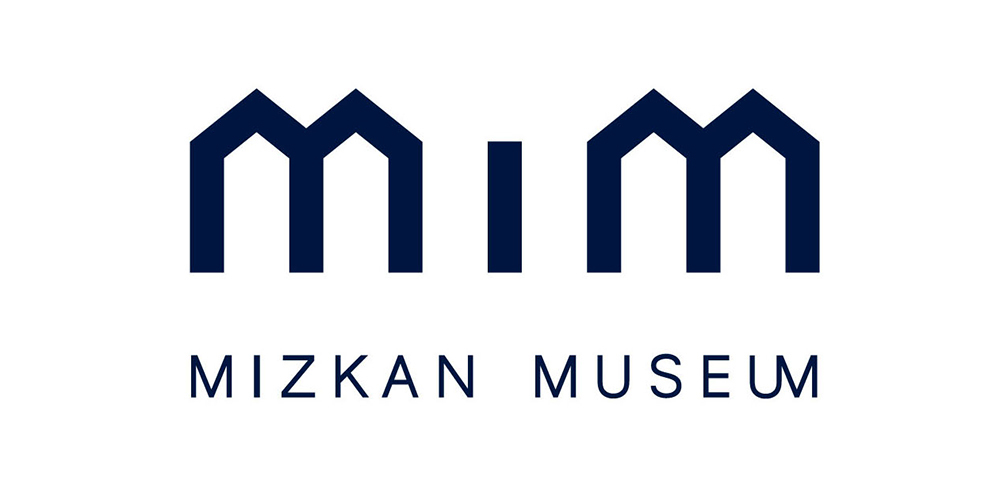
The museum unfolds across five zones
The museum is organized into five areas, each themed around "Earth, Wind, Time, Water, and Light." The first zone, "Earth's Storehouse," conveys the Mitsukan Group's manufacturing spirit, passed down continuously since the Edo period. Here, peering into the large barrels in front allows visitors to see the modern factory below, creating a fun time tunnel effect. The next space offers hands-on experiences enjoyable for children, such as trying to carry a barrel and guessing the amount of vinegar inside by the sound of tapping the barrel.
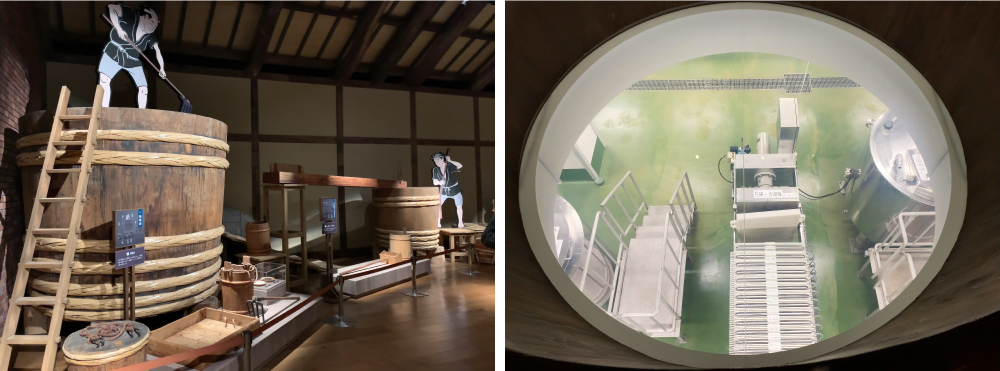
Next, the "Wind Corridor" conveys the history of the Mitsukan Group, which has walked alongside the land of Handa, through photographs tracing the history of community interaction since ancient times. What's interesting is that outside the front window of the "Wind Corridor," flanked by photo panels on both ends, you can see a single, old-fashioned tree that also appears in the photographs. This seemingly ordinary tree serves as a reminder of the many layers of history accumulated in this land over time. Before entering the Wind Corridor, a passageway leads to a courtyard where a uniquely designed modern windmill stands in a space filled with rippling water. This facility incorporates various natural energies like wind, water, and sunlight, embodying the concept of environmental consideration.

The final zone, where history is unraveled, is the "Time Vault," boasting a spectacular view. Here, visitors can experience the Mitsukan Group's journey of transformation and challenge since the Edo period through a space and visuals that feel like a time slip back to that era. The massive ship in the venue is a large wooden vessel called the "Benzaisen," 20 meters long and 5 meters high, which transported vinegar from Handa to Edo during the Edo period.
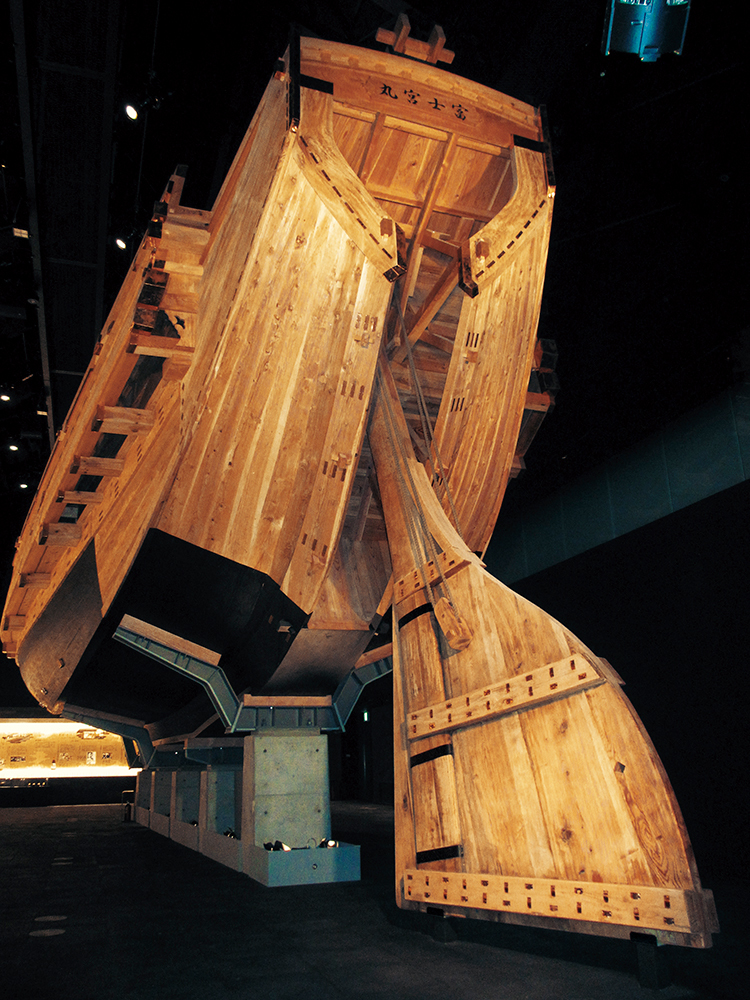
Visitors actually step onto the ship's deck to view a massive 3×15-meter projection. This recreates the Benzaisen that transported vinegar from Handa to Edo, telling the story of how it helped blossom Edo's sushi culture. Scenes depicting the ship rocking through stormy seas feature immersive effects like strong winds blowing against your face, making it an enjoyable attraction. The walls surrounding the ship also display a historical scroll depicting the history of Mizkan.
The "Water Theater" presents a video expressing the group vision slogan: "What eventually transforms into life." Under the theme "The Four Seasons of Food and Life," it conveys how Japanese cuisine is deeply intertwined with seasonal memories. This video was filmed over a year and a half across Japan's four seasons, featuring local residents from each location.
The final area is the experiential content zone, "Garden of Light." It includes a corner to learn how to make sushi, the "Aji-Pon Studio" where you can create "Aji-Pon" with a label printed with your own photo, and spots to learn various cooking recipes. It is especially popular with children.
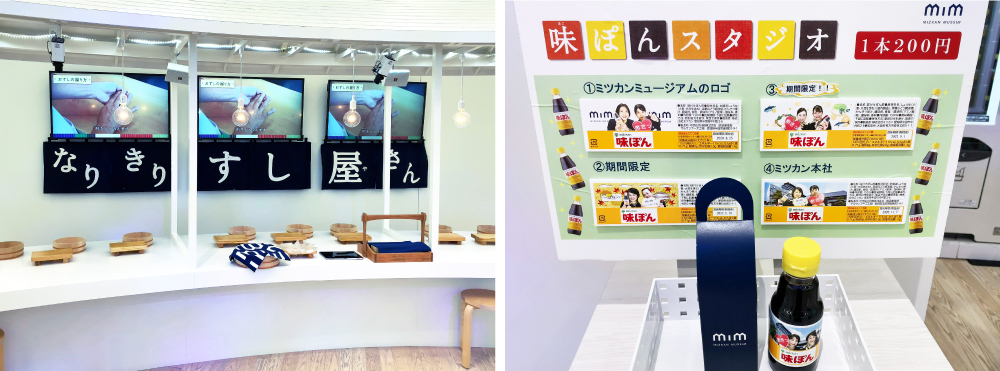
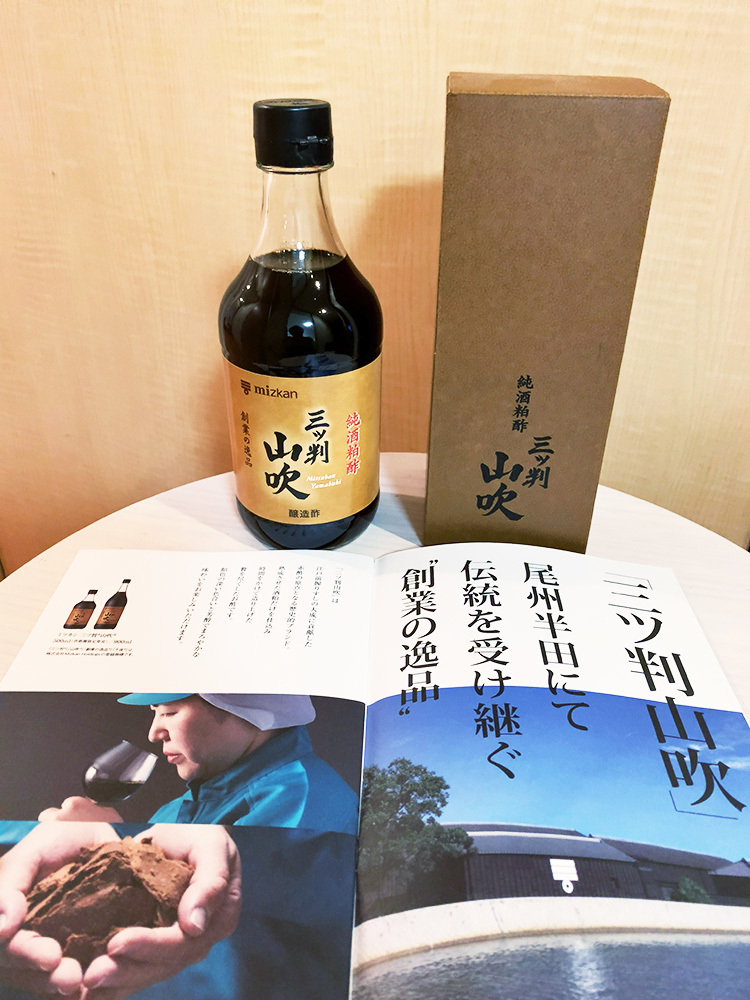
Among the five zones, the most popular are the Benzaiten Boat in the "Time Warehouse" and, in a close second, the Aji-Pon Studio in the "Garden of Light." The Aji-Pon Studio sometimes sells 50 of these original print products in a single day, and some couples even purchase them as wedding favors. Director Niimi states, "What sets us apart from other museums is the abundance of interactive elements designed for active enjoyment, not just passive viewing." He adds, "Museum directors often debate whether to prioritize 'learning' or 'entertainment'. We believe entertainment is essential for creating lasting memories. Our guides constantly strive to make the experience enjoyable."
The 90-minute guided tour flies by
Visitors can enjoy the museum through a 90-minute guided tour. The museum actually puts considerable effort into these tours. They tailor explanations to the participants' backgrounds and constantly simulate how visitors can best enjoy the experience. For instance, if there are many children, they increase the time for hands-on activities over historical explanations. The director himself visits various museums, always studying their approach to guiding.
According to Director Niimi, the museum's greatest strength lies in its direct ownership of the ancient documents that form the basis of its narratives. These historical records, spanning over 200 years, are studied through a dedicated public interest incorporated foundation and number approximately 170,000 items. The "Time Warehouse" is built on data like what was procured during which Edo period and how much revenue was generated. This allows for concrete statements like vinegar sales exceeding 2,000 ryo during that era. This is only possible because the actual ledgers remain.
The target audience is third-grade elementary students and their parents
While the content is enjoyable for adults, the facility's main target audience is actually third graders. "The main users of vinegar today are people in their 60s and 70s. How do we approach the younger generation raising children? We hope this becomes an opportunity for third graders and their parents to learn, experience, and then create vinegar-based dishes at home," says Director Niimi.
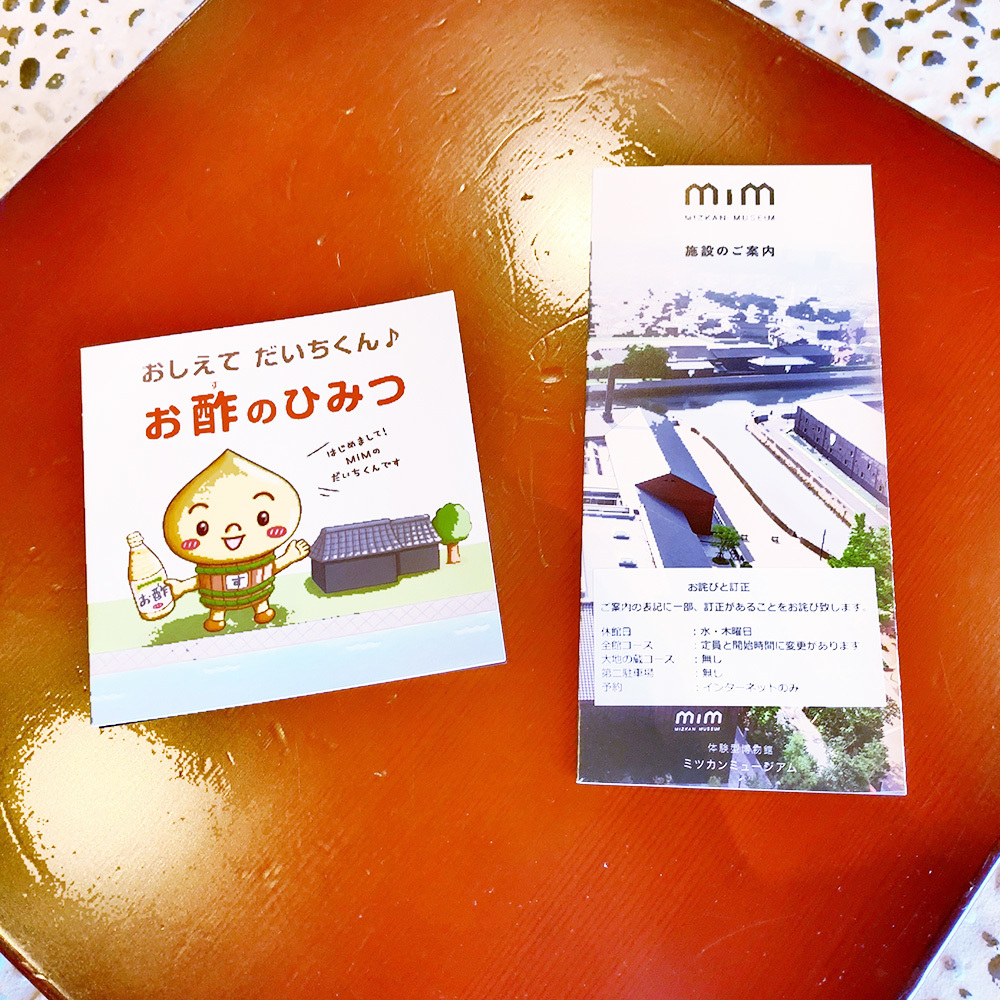
In fact, elementary school tours are very popular, with nearly all schools in the Handa area visiting for social studies field trips. The hands-on activities mentioned earlier—like carrying barrels or making sushi—were actually designed with third graders in mind.
Employees and business partners
This museum isn't just for external appeal; it's also used internally. It serves as a place for employees to learn about the company's history spanning over 200 years, and this isn't limited to domestic staff. Almost all employees visiting Japan on business trips from overseas locations come here and leave deeply impressed. An employee visiting from the UK was so captivated by the videos shown throughout the museum that they took them back to show all UK employees.
"The museum staff's passion for 'MIM' is incredibly strong, and their daily improvement suggestions are remarkable. Even outsourced personnel will suggest things like, 'The placement of the questionnaire forms isn't ideal; how about moving them here?' We naturally consider such suggestions, and that particular proposal was addressed within 30 minutes. We've also had former employees donate wheelchairs. One retiree was troubled by the memory of visitors unable to tour due to insufficient wheelchairs during their tenure. They wanted to help, thinking that increasing the number of permanently available wheelchairs would make a difference. It's truly heartwarming," says Director Niimi. Hearing that even retirees continue to show their love for MIM is a touching story.
This tour course also has dedicated time slots for business partners. There's a special tour course, held twice daily, but staff are often called in even on closed days (Thursdays).
Operated as a Directly Managed Department of the Holding Company
At Mizkan, the museum is an organization directly under the holding company. It serves as Mizkan's communication hub, closely linked to management while also maintaining tight coordination with various departments. As the core for external communications, it works closely with the PR department. For internal training, it collaborates with HR, and for local community engagement, it's closely aligned with General Affairs. Furthermore, for building relationships with business partners, it also coordinates with Sales.
Regarding local community ties, they participate in every local event. Their approach is not to impose their own initiatives but to assist the community in realizing their own goals, consciously avoiding excessive involvement.
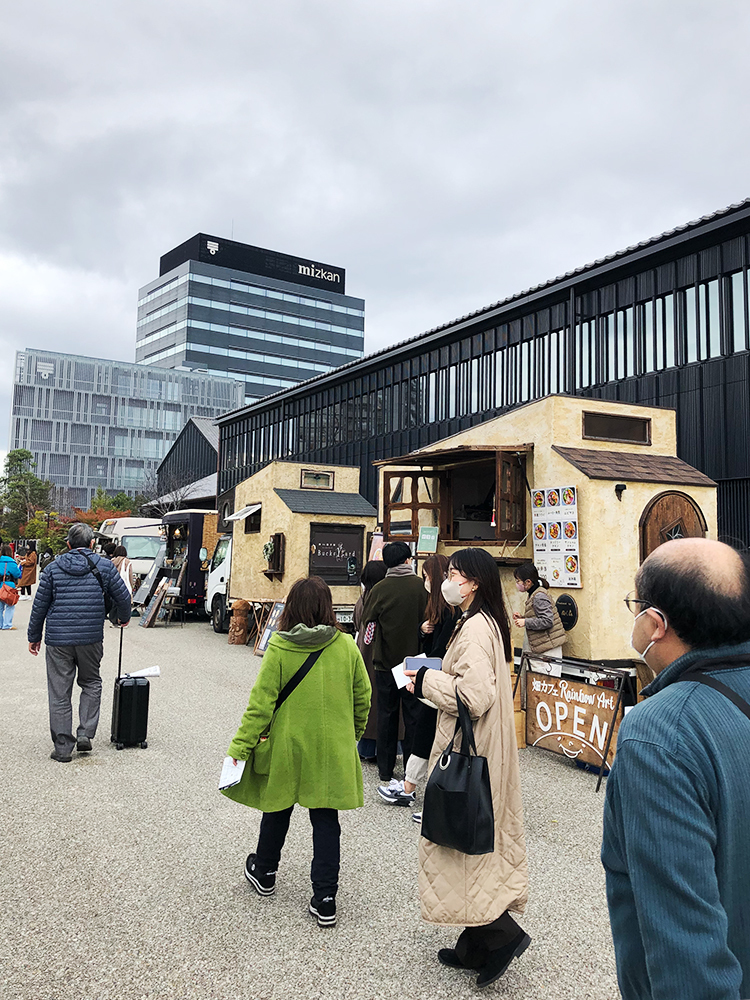
As a Compass for Management
Director Shinmi, who shared so much with us this time, was actually the person responsible for launching MIM. He stepped away from the museum for a while after its founding but returned to become Director in January 2022. Director Shinmi originally worked at Mizkan as a marketer. He enjoys planning initiatives, and being a local himself, he frequently handles negotiations and matters within the Handa City area. In March 2022, Kei Akamatsu, who also has experience in advertising, promotion, and sales planning, transferred here. The fact that such talent is being invested here clearly shows Mitsukan's serious commitment.
As the company navigates its next 100 years after 200 years of existence, and looks toward its 500th anniversary, this museum serves as a vital compass for management and employees alike—a place to confirm the path forward. Seven years have passed since its renovated opening, but driven by a desire to further embody the "Future Vision Declaration" announced in 2018, plans are underway to expand its content. We look forward to seeing what next steps the ever-forward-thinking company will take.

【Related Articles】
・Mizkan Museum: Food and Life Through the Seasons (Part 1) can be found here.
・Mizkan Museum: Food and Life Through the Seasons (Part 2) is here.
[Editor's Note] (From the Web Dentsu Inc. Editorial Department)
Hearing "o-su" (honorific for vinegar) made me think. Come to think of it, we say "o-shoyu" (honorific for soy sauce) and "o-miso" (honorific for miso paste) too. Same with "o-sake" (honorific for sake), "o-kome" (honorific for rice), and "o-hana" (honorific for
"O-fish," "o-meat," "o-futon"—they're all like that too. What is this feeling?
I believe it stems from the idea that these are "irreplaceable, precious things essential for sustaining life." That's why we add "o" (honorific prefix). It comes from a sense of gratitude. Companies and producers respond to that "o" with their utmost effort. What we've loved since childhood isn't "Mizkan's vinegar," but "Mizkan's vinegar."
Was this article helpful?
Newsletter registration is here
We select and publish important news every day
For inquiries about this article
Back Numbers
Author

Iguchi Osamu
PR Consulting Dentsu Inc.
Executive Officer
Chief PR Planner
We handle a wide range of services, from developing data-driven corporate PR strategies to strategic PR for products and services, viral campaigns utilizing video content, and municipal PR. Proposes initiatives like "PR IMPAKT," which creates content likely to trend in news and social media, and "Information Flow Structure," which unravels information pathways across media. Over 30 years of experience in PR agencies. Recipient of numerous awards including "World's Top 50 PR Projects," "Cannes Lions Grand Prix," "Asia Pacific Innovator 25," and "Gunn Report Top Campaigns 100." Has served as a judge for numerous domestic and international awards, including Cannes Lions, Spikes Asia, SABRE Awards Asia-Pacific, PR Awards Asia, Japan PR Association PR Award Grand Prix, and Nikkei SDGs Idea Competition. Author of "The Essence of Strategic PR: Five Perspectives for Practice" and co-author of "Learning from 17 Successful Cases: Local Government PR Strategy."




